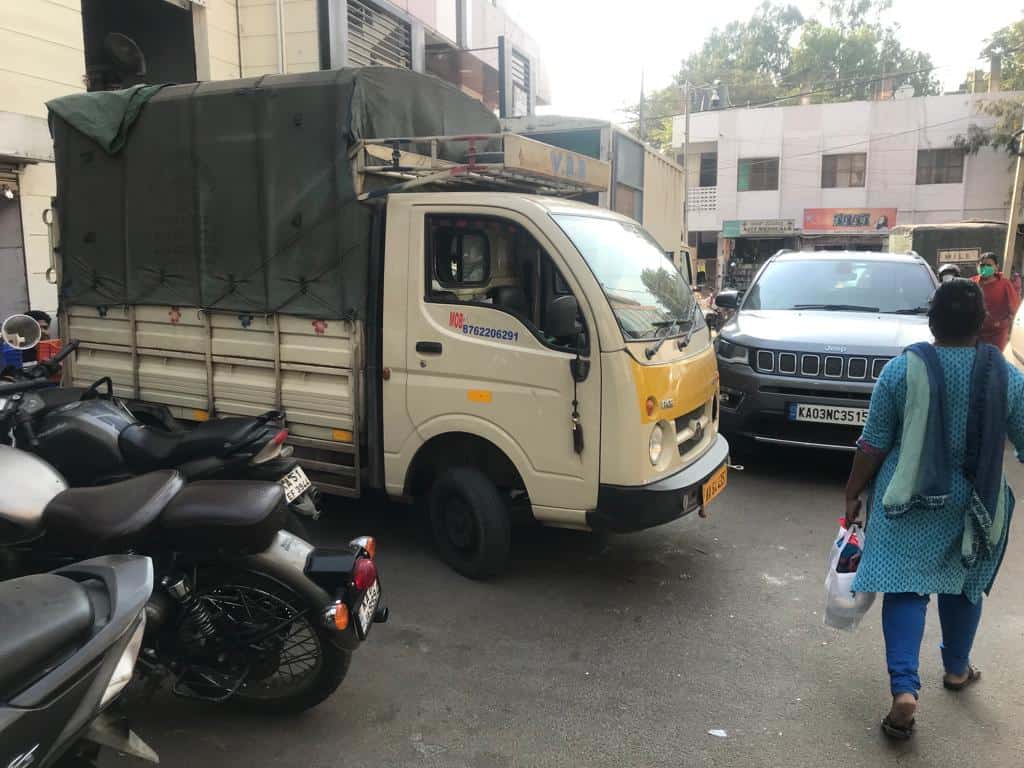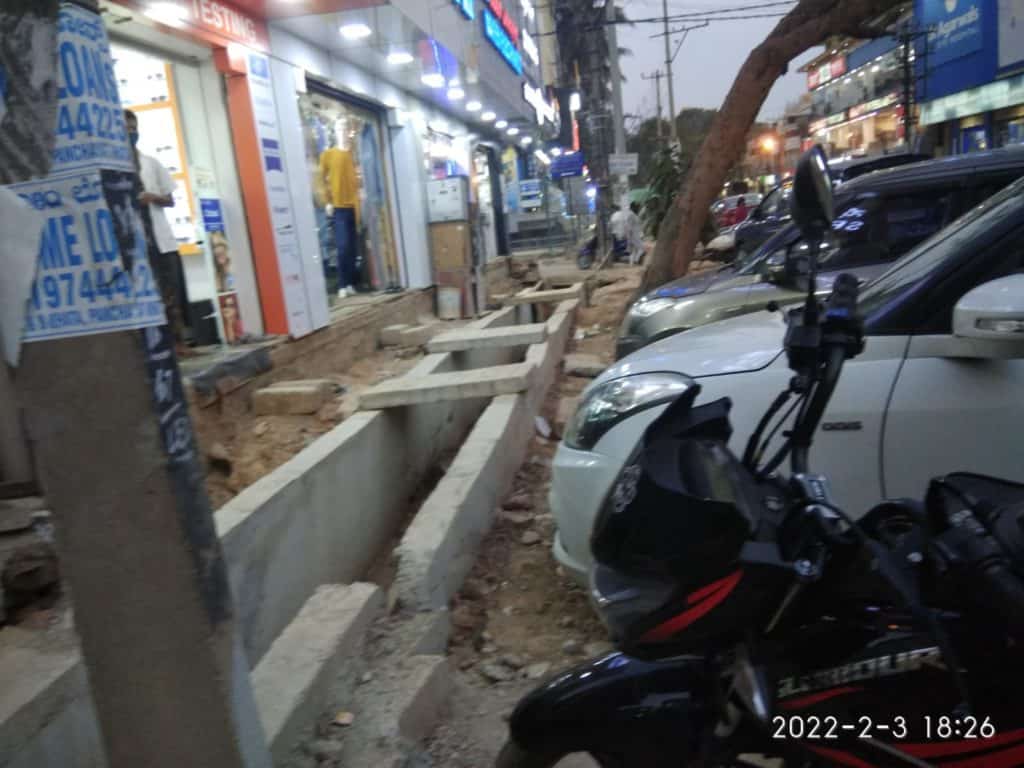This is the first of a three-part analysis of various mobility policies/plans for Bengaluru that aim to regulate use of private vehicles to reduce road traffic congestion, improve different modes of public transport and encourage its use, and create the right infrastructure to enable and encourage safe use of non-motorised transport, particularly cycling and walking.
COVID-induced Work From Home (WFH) has given a slight relief to Bengalureans from its perennial road traffic congestion. The last two years have seen manageable traffic around IT parks. But the situation in the CBD (Central Business District) and certain other parts of the city is back to the chaotic pre-COVID levels.
Congestion will most likely become worse in the coming months as most organisations revert to ‘Work From Office’. Besides, citizens continue to prefer private rather than public transport due to Covid safety concerns.
It is recognised that private vehicles (particularly cars) are the main cause of traffic congestion. All prominent stakeholders have been expressing their intentions from time to time to limit the number of cars and two wheelers to control congestion.
But experience shows that mere intentions to reduce private vehicles do not translate into real change on the ground. What is required is rigorous and effective implementation of a set of measures in the form of incentives and disincentives to bring about the desired reduction.
Part 2: Fix public transport to reduce car, bike trips
Part 3: Better mobility design can encourage the use of public transport, cycling and walking
Mobility experts and authorities have identified many measures which specifically address the problem of traffic congestion. Attempts are on to implement some of these measures. A few have achieved some success but we do not see consistent and significant results because the measures do not seem to have been pursued with the desired seriousness and sense of urgency.
There are bound to be constraints and limitations in implementing measures which are necessary but also somewhat unpopular. Having said that, it is the responsibility of the authorities to take all stakeholders into confidence to find acceptable solutions.

Read more: “Unplanned development failed the ORR. It may fail Peripheral Ring Road too”
Here we look at two aspects, a parking policy and congestion pricing.
Parking fees
- Parking: This can impact both ownership and usage of private vehicles. A carefully drafted and well implemented parking policy can be an effective measure.
- The relevant clauses about parking in the approved CMP (Comprehensive Mobility Plan) are:
4.6.i and ii. Make reserved parking a prerequisite for new vehicle registrations across the state and charge parking fees.
4.12.ii.d Parking fees should be time and demand-based.
To operationalize the above, Clause 5.4.7 of the draft Parking Policy (uploaded for public consultation) says that proof of reserved parking space will be made mandatory to purchase a vehicle, while registering new vehicles or transferring ownership of registered vehicles.
Unfortunately, in the final parking policy document approved in February 2021, this clause was dropped.
Again, the draft parking policy spoke about a permit fee for parking in residential areas.

Clause 5.4.5-d said that the permit shall be issued against an annual residential parking fee which shall not be less than 3% of the land value of one car parking area (165 sq feet), provided that the permit fee does not exceed a ceiling amount (say Rs 50,000 per annum).
In the approved Parking Policy, the above provision has been completely diluted and the permit fee has been fixed as follows:
Residential Parking Permit (annual fee) for ward level roads only:
- Small cars: Rs 1000
- Medium cars: Rs 3000/4000
- MUVs/SUVs: Rs 5000
Thus a MUV/SUV owner will pay Rs 13.88 per day for parking a vehicle which costs lakhs.
Interestingly, in the tripartite MOU signed by the Government of India, Government of Karnataka and Bengaluru Metro Rail Corporation, the clause about Parking Policy (12.28) reads as follows:
“The GoK and/or City Corporation would come up with a parking policy wherein parking fee represents the true value of the land occupied which is used to make public transport more attractive; banning of parking on arterial/ring roads; provision of multi-level parking centres in the city centres with park and ride facility etc.”
The first anniversary of the approved Parking Policy was February 2nd, 2022 but there is no visibility about its implementation. The parking policy is an important measure to regulate private vehicles but the political will to implement it is clearly missing.
Read more: “Bengaluru’s proposed Parking Policy actually encourages private transport”
Congestion Pricing Scheme
This is a very focused measure to reduce congestion and was suggested by Dr Sudhir Krishna, Secretary, Urban Development Department, Government of India in January 2013.
The opening sentences of his letter to all chief secretaries of states were as follows: “It is a well-known fact that mobility in our cities, either big or medium, is a huge challenge due to congestion during peak hours which is mainly due to excessive use of private vehicles. There is a need to resolve the congestion issues urgently for improving the mobility of the people.”
An RTI application made in January 2019 to Karnataka chief secretary to know the “action taken” got tossed from one department to another for seven months before information was received from DULT.
DULT had engaged MSI Global Pte Ltd, Singapore to look at the feasibility of implementing congestion pricing in Bengaluru. They submitted their report in April 2015.
The agency recommended a congestion charging scheme in an area of two sq kms with 18 entry points in the CBD (Central Business District). It was estimated that imposing congestion pricing during the morning peak period of 1000-1200 hours for vehicles entering the CBD is likely to result in a 16% reduction in inbound traffic flow.
They had proposed an entry charge of Rs 150 for cars with charges for other vehicles to be fixed based on the PCU equivalent.(Example: Rs 75 for a two-wheeler which is rated .5 PCU), They had also estimated that the capital and operational cost of the scheme will be recovered within 2.5 to 4 years.covered within 2.5 to four years.
For reasons best known to the authorities, the scheme has still not been implemented.
The approved Comprehensive Mobility Plan (CMP) for Bengaluru also talks of congestion pricing under two chapters namely “Private Transport Management Plan” and “Fiscal Measures”.nagement Plan” and “Fiscal Measures”.
It may therefore be a good idea to fine-tune the congestion pricing scheme (prepared by MSI Global), obtain citizens’ suggestions and implement it in a phased manner.
Most of Bangalore’s working population lives in arterial roads of Bengaluru with almost no direct connectivity to BMTC or Metro. There is no one to regulate Auto rickshaw drivers’ dadagiri. They loot customers like anything. Ola Ubers are never available or always at peak pricing. Private Cars in Bengaluru is not a luxury but a necessity for the middle class.
First try to fix public transport infra and then give these ‘gyaans’!!
[Ed: This comment has been edited to suit our Comments Policy]
Thanks for your comment on the first article in the 3 part series.The second is about fixing public transport as suggested by you.Kindly have a look at it.
Need better infrastucture and require strict action on wasting public funds.
On Road parking and foot path parking should be banned.
These are not meant and designed to park vehicles.